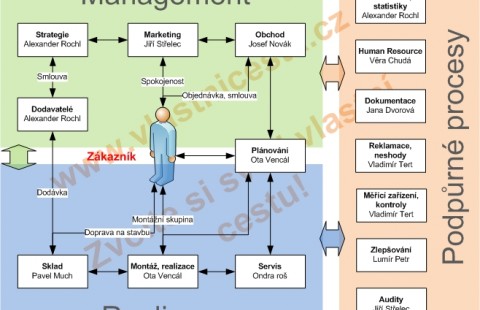The ISO 9001:2000 standard defines the requirements on the quality management system. It is this very standard that directs certifications of quality systems. The fundamental benefit of this standard is its process-orientated approach.
ISO Standards
ISO is the International Organization for Standardization. It is a worldwide federation of the national standard institutions. ISO publishes international standards usually prepared by ISO technical committees. At least 75 % of voting members is needed to publish the standard.
ISO 9001:2000 is already the third edition which superseded the second edition from 1994. Three standards of the second edition are focused on the whole quality management system – ISO 9001, the standard describing a quality management system where design and development were excluded – ISO 9002,A test and an inspection system described in ISO 9003 were superseded by one standard ISO 9001:2000 standard.
Members of ISO 9000 standards family are the basic manual for each and every quality management system consultant.
ISO 9001:2000 Quality management system - requirements
ISO 9001 urges management to have the quality management system as a strategic decision.
The system allows:
- easiest introduction of newcomers
- simple and easy modeling of upcoming changes
- costs optimization
- efficiency of material and products flows
- etc.
The system can oblige continual changes of targets, products, management requirements and interested parties with its flexibility.
Process approach
ISO 9001 emphasizes process approach of the system, which is a baseline for its flexibility. An objective of the process approach is to increase customer satisfaction (see picture). Only Customer satisfaction keeps current customers and attracts new customers.
Process is defined as an activity using resources and controlled in order to change inputs to outputs. Application, identification and mutual processes control and activities are considered as process approach. Process approach emphasizes:
- understanding and fulfillment of customers & interested parties’ requirements,
- added value of processes and activities within the company
- continual improvement of processes’ efficiency and effectiveness
- continual improvement of processes based on the metrics measurement
PDCA model for continual improvement is firmly confirmed in the ISO standard.
ISO 9001 is addressed to companies intended to:
- demonstrate ability to constantly deliver products according to customer requirements
- continually increase customer satisfaction
Content of ISO 9001:2000 standard
The following chapters which define all process quality management system requirements can be found in the standard:
1. Scope
2. Normative reference
3. Terms and definitions
4. Quality management system
5. Management responsibility
6. Resource management
7. Product realization
8. Measurement, analysis and improvement
These 8 chapters replaced original 20 chapters, see bellow, of the ISO 9001 standard seconds edition:
4.1 Management responsibility
4.2 Quality system
4.3 Contract review
4.4 Design control
4.5 Document and data control
4.6 Purchasing
4.7 Control of customer-supplied product
4.8 Product identification and traceability
4.9 Process control
4.10 Inspection and testing
4.11 Control of inspection, measuring and test equipment
4.12 Inspection and test status
4.13 Control of nonconforming product
4.14 Corrective and preventive action
4.15 Handling, storage, packaging, preservation & delivery
4.16 Control of quality records
4.17 Internal quality audits
4.18 Training
4.19 Servicing
4.20 Statistical techniques
Resource: The ISO 9001:2000 Quality Management System



